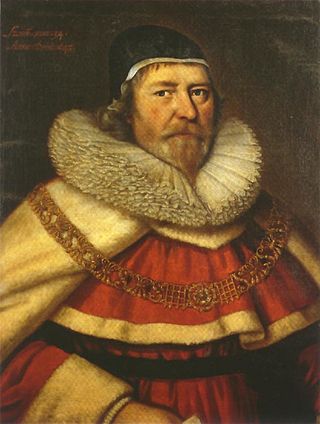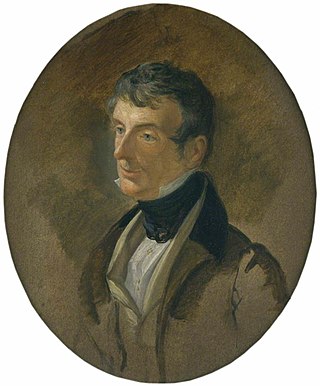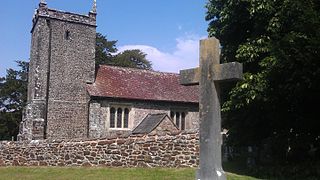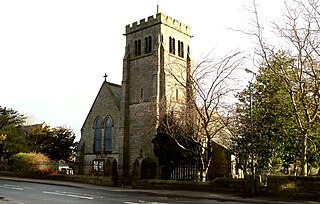
Wimborne Minster is a market town in Dorset in South West England, and the name of the Church of England church in that town. It lies at the confluence of the River Stour and the River Allen, 5 miles (8 km) north of Poole, on the Dorset Heaths, and is part of the South East Dorset conurbation. According to Office for National Statistics data the population of the Wimborne Minster built-up area as of 2014 was 15,552.

Kingston Lacy is a country house and estate near Wimborne Minster, Dorset, England. It was for many years the family seat of the Bankes family who lived nearby at Corfe Castle until its destruction in the English Civil War after its incumbent owners, Sir John Bankes and Dame Mary, had remained loyal to Charles I.

Colehill is a parish neighbouring Wimborne Minster, in Dorset, England, with a population of 7,000 (2001), shrinking slightly to 6,927 people at the 2011 census.

Pamphill is a village in south-east Dorset, England, just outside Wimborne Minster, four miles north of Poole. The village has a population of 704 (2001).

Halifax Minster is the minster church of Halifax, Calderdale, West Yorkshire, England. The church is dedicated to St John the Baptist. Formerly the parish church of the town, it was granted minster status in 2009. Halifax Minster is one of three churches in the county of West Yorkshire to be given this honorific title; the other two are Dewsbury Minster and Leeds Minster.
Queen Elizabeth's School is a co-educational secondary school in Wimborne Minster, Dorset, England.

The Bankes family were prominent landed gentry in Dorset, England, for over 400 years. They owned large portions of land throughout Dorset and made significant contributions to the political history and development of the country.

William John Bankes was an English politician, explorer, Egyptologist and adventurer.

Wimborne Minster is the parish church of Wimborne, Dorset, England. The minster has existed for over 1300 years and is recognised for its unusual chained library. The minster is a former monastery and Benedictine nunnery, and King Æthelred of Wessex is buried there.

St Mary the Virgin is the Church of England parish church of Lytchett Matravers in Dorset. Its parish is part of the Diocese of Salisbury. The building is Grade I listed.

Henry Bankes (1757–1834) was an English politician and author.

St Andrew's Church is in Church Street, Slaidburn, Lancashire, England. It is an active Anglican parish church in the deanery of Bowland, the archdeaconry of Craven, and the Diocese of Leeds. Its benefice is united with that of St George, Dunsop Bridge. The church is recorded in the National Heritage List for England as a designated Grade I listed building. It is notable for its "quantity of good early woodwork".

The Church of St James is the parish church for the village of Kingston, located on the Isle of Purbeck in Dorset. The church is a notable example of the Gothic Revival style and is a Grade I listed building.

The Church of St Michael and All Angels, Beckwithshaw, North Yorkshire, England, also known as Beckwithshaw Church, is an Anglican church built and furnished between 1886 and 1887 by William Swinden Barber in the Gothic Revival style as part of the Arts and Crafts movement. The stained glass windows in the same style were added in 1892. The church is listed as a Grade II historic structure; it is a pristine and unchanged example of an Arts and Crafts church retaining all its original furnishings, apart from one missing statue. However, in 2018 the church officers gained planning permission for changes which included removing all of the original pews. The first vicar of this church, from 1887 to 1894, was Charles Farrar Forster.

St Cuthbert's is in Seascale, Cumbria, England. It is an active Anglican parish church in the deanery of Calder, and the diocese of Carlisle. Its benefice is Seatallan. The church is a Grade II Listed Building.
Henry John Ralph Bankes, known simply as Ralph Bankes, was a British landowner and Lord High Admiral of Purbeck.

The Church of St Giles is the Church of England parish church for the village of Wimborne St Giles, Dorset. Originally founded in the 13th century and rebuilt several times over the ensuing centuries, the present church is a mixture of Georgian and Gothic Revival architecture. It is located at the start of the main driveway to St Giles House, the seat of the Earl of Shaftesbury, at the end of a row of Stuart-era almshouses.
















